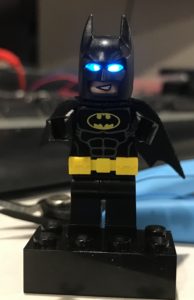This is similar to the previous xrdp and xorgxrdp how-to, it is just adjusting to the newer versions of all the pieces of software.
This how-to is based on the install instructions from XRDP’s github pages for installing on Debian 8.
Install xrdp’s dependencies:
$ sudo apt-get install git autoconf libtool pkg-config gcc g++ make libssl-dev libpam0g-dev libjpeg-dev libx11-dev libxfixes-dev libxrandr-dev flex bison libxml2-dev intltool xsltproc xutils-dev python-libxml2 g++ xutils libfuse-dev libmp3lame-dev nasm libpixman-1-dev xserver-xorg-dev
Get the xrdp and xorgxrdp sources:
$ mkdir -p GIT-sources/neutrinolabs
$ cd GIT-sources/neutrinolabs
$ wget https://github.com/neutrinolabs/xrdp/releases/download/v0.9.3.1/xrdp-0.9.3.1.tar.gz
$ wget https://github.com/neutrinolabs/xorgxrdp/releases/download/v0.2.4/xorgxrdp-0.2.4.tar.gz
Building and installing xrdp:
$ cd GIT-sources/neutrinolabs
$ tar xvfz xrdp-0.9.3.1.tar.gz
$ cd xrdp-0.9.3.1
$ ./bootstrap
$ ./configure --enable-fuse --enable-mp3lame --enable-pixman --enable-sound
$ make -j2
$ sudo make install
$ sudo ln -s /usr/local/sbin/xrdp{,-sesman} /usr/sbin
Building and installing xorgxrdp:
$ cd GIT-sources/neutrinolabs
$ tar xvfz xorgxrdp-0.2.4.tar.gz
$ cd xorgxrdp-0.2.4
$ ./bootstrap
$ ./configure
$ make -j2
$ sudo make install
Generate keys:
$ sudo xrdp-keygen xrdp auto 2048
Building the pulseaudio modules:
$ cd ~
$ mkdir -p Release-sources/pulseaudio
$ cd Release-sources/pulseaudio
$ sudo apt-get install dpkg-dev
$ sudo apt-get source pulseaudio
$ sudo apt-get build-dep pulseaudio
Change the permisions on the pulseaudio directory to your user:
$ sudo chown -R [USER]:[GROUP] pulseaudio-10.0
$ cd pulseaudio-10.0
$ ./configure
In change directory to “~/GIT-sources/neutrinolabs/xrdp-0.9.3/sesman/chansrv/pulse”
$ cd ~
$ cd GIT-sources/neutrinolabs/xrdp-0.9.3.1/sesman/chansrv/pulse
Edit the Makefile with your favorite editor and point it to the sources for pulseaudio by changing:
PULSE_DIR = /tmp/pulseaudio-10.0
to:
PULSE_DIR = ../../../../../../Release-sources/pulseaudio/pulseaudio-10.0
then:
$ make -j2
If the build is successful , copy the 2 modules to /usr/lib/pulse-10.0/modules.
$ sudo cp module-xrdp*.so /usr/lib/pulse-10.0/modules
Check the /usr/lib/pulse-10.0/modules directory:
$ ls -al /usr/lib/pulse-10.0/modules
If necessary, fix the ownership and permissions on the two modules:
$ cd /usr/lib/pulse-10.0/modules
$ sudo chown root:root module-xrdp-s*.so
$ sudo chmod 644 module-xrdp-s*.so
The modules are named module-xrdp-sink.so and module-xrdp-source.so
Enable the services:
$ sudo systemctl enable xrdp.service
$ sudo systemctl enable xrdp-sesman.service
Fixes for possible issues:
To run it as terminal server (also useful for Guacamole) add allowed_users=anybody to /etc/X11/Xwrapper.config to allow anybody to start X
To fix the thinclient_drives share error when connected via RDP to the client:
$ sudo umount thinclient_drives
logout and re-login via rdp


